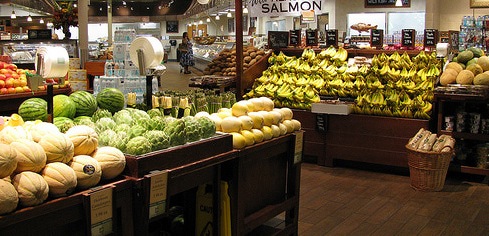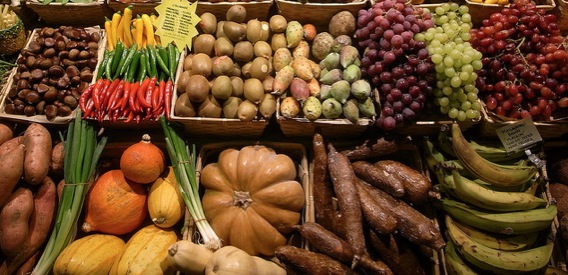Summer Trends in Organic Banana Sales and Merchandising

Photo courtesy of star2.com
Bananas are a hot commodity. Measured by value or by volume, bananas are the major fresh fruit imported to the United States. In organics categories, bananas are the largest organic import to the U.S. as well, boasting a $214.5 million import value in 2013.
With the summer harvest season in full swing, bananas have quite a few fresh friends in fruit departments lately. How do grocery stores and retailers continue to sell bananas when there are so many fresh fruits in season?
Thankfully, the banana is an American household staple. The Packer indicates that 84% of consumers purchased bananas at least once in the past year. Other statistics point out that more than 96% of U.S. households buy bananas at least once a month. Regardless of the season, bananas are a tried-and-true purchase for most Americans.
This means that retailers shouldn’t approach fresh produce as competition, but as additional sales opportunities. As one of the best-selling commodities in the produce department, bananas are often one of the reason consumers visit the produce department. Therefore, many merchandisers place their banana displays at the back of the store or department, allowing customers to walk through the displays of fresh fruits such as watermelons, stone fruits and berries in order to reach their staple: bananas.
Organics Unlimited expects minimal fluctuations in purchases as the seasons change, based on consistent consumer demand.
We’d love to hear your feedback. Share your thoughts and suggestions on merchandising and displaying organic bananas during the summer months by commenting below.
Follow Organics Unlimited on Facebook and Twitter to stay updated on the latest recipes, retail marketing tips and organic banana facts. Use #GROWTURNS10 on your social media posts to celebrate September GROW Month.
Retail Organic Demand Strong in Third Quarter
A new retail produce department sales report shows big double-digit gains for fresh organic fruits and vegetables in the third quarter compared with a year ago.
The FreshFacts on Retail report, developed in partnership by Washington, D.C.-based United Fresh Produce Association with Coral Gables, Fla.-based Del Monte Fresh Produce N.A. Inc. and Chicago-based Nielsen Perishables Group, tracks quarterly retail sales performance of fresh produce retail sales. Read more
OTA Suggests Strong Rise in Organic Produce Sales
If you think organic produce is a trend that has plateaued, think again.
The latest Organic Trade Association survey shows organic fresh produce sales continue to rise and at a greater rate as the recession recedes.
OTA figures show produce sales rose by more than 13% to $9.7 billion in 2012, and organic fruits and vegetables account for more than 10% of consumer fruit and vegetable sales, compared with 6% in 2006 and 2% in 1998.
There is no doubt that consumers’ demand for organic food, especially fresh fruits and vegetables, will increase as the economy strengthens.
Companies that specialize in organic produce and ones that grow and ship only a portion of their product as organic each are finding success.
Nearly every fruit and vegetable item is seeing organic growth.
For instance, organic pear production in the Northwest is expected to rise this year to meet demand.
In the past, we have been skeptical of OTA’s sales figures, and this year they differ from ones we’ve used. In The Packer’s annual Produce Market Guide, we reported retail scan data figures from FreshLook Marketing that showed organic produce sales grew from $2.34 billion in 2011 to $2.78 billion in 2012, and increased from 4.5% of total produce sales to 5.2% of total sales.
The OTA acknowledges its survey has overestimated sales in the past, and it’s good to see the group continue to work on presenting the industry with accurate figures.
Regardless of the details, organic produce remains a niche that many produce companies find worth the investment.
Source: The Packer


